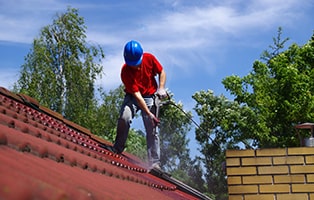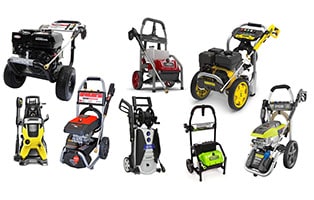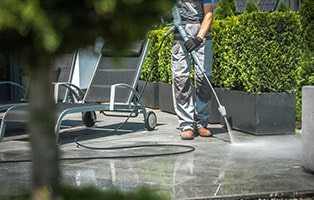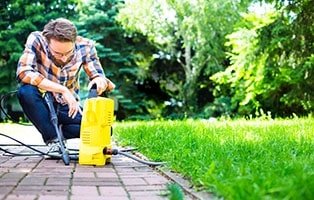How to Pressure Wash a Roof: The 2023 Guide.
A high-quality pressure washer is an indispensable tool that should be part of every homeowner’s toolbox. It can be used to blast unsightly gunk from a driveway, clean off years of crud from patio furniture, and restore a natural wood deck to its original sheen.
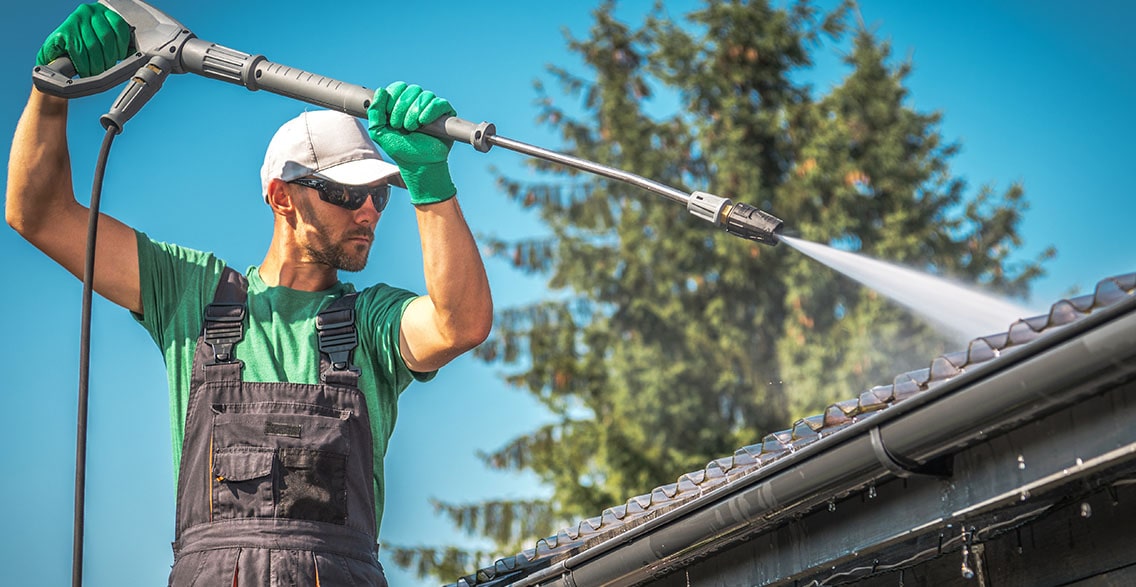
There’s a seemingly endless number of ways a pressure washer can be used. Some people even pressure wash their roof. However, is this advisable? The short answer is, it depends.
This article will cover these points:
- Why you might not want to pressure wash your roof
- The step-by-step roof pressure washing procedure
- How to find the right pressure washer for your needs
Let’s dive in!
Should I Pressure Wash My Roof?
A home is a substantial investment, which means you need to take care of it. One part that deserves a lot of attention is your roof.

Neglecting it can lead to damage that insidiously adds up and compounds over time. This is why it behooves you to have an annual inspection and cleaning of your roof done.
You might be wondering:
- Can I do the inspection myself ?
- Can I clean my roof without professional assistance ?
- Is pressure washing the best way to get rid of that black gunk on my roof ?
Here are your answers…
How a Pressure Washer Can Damage a Roof
Pressure washers create powerful water jets that instantly blast away surface sediment. However, the surface being cleaned must be able to withstand that amount of pressure.
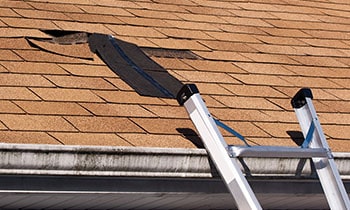
If not, damage might occur, and the effort to make something look better will end up being counterproductive.
Thin asphalt shingles with protective coatings on them are designed to survive pounding rain. On the other hand, a highly concentrated stream of water shooting out at 2800 PSI or more is another story.
If you’re not careful, you could end up ripping the shingles right off the roof, causing neighbors to wonder if that’s a handyman up there or a deranged madman.
Another potential hazard is falling off the ladder or slipping off the roof.
How to Decide if You Need A Pressure Washer
All this is why you’ve got to carefully consider whether you should be pressure washing your roof in the first place. If all that’s mucking up your roof is ordinary dirt, leaves, and other plant matter that isn’t stuck on, there are zero reasons to use a pressure washer. Debris like this can be better handled by spraying it with a garden hose or lightly sweeping it with a kitchen broom.
However, suppose you see mold, moss, algae, or other types of persistent vegetation that’s not easily gotten rid of with ordinary methods. In that case, the only viable course of action is to pressure wash it into oblivion. No amount of sweeping or spraying with a garden hose can eradicate a fungal invasion of this magnitude.
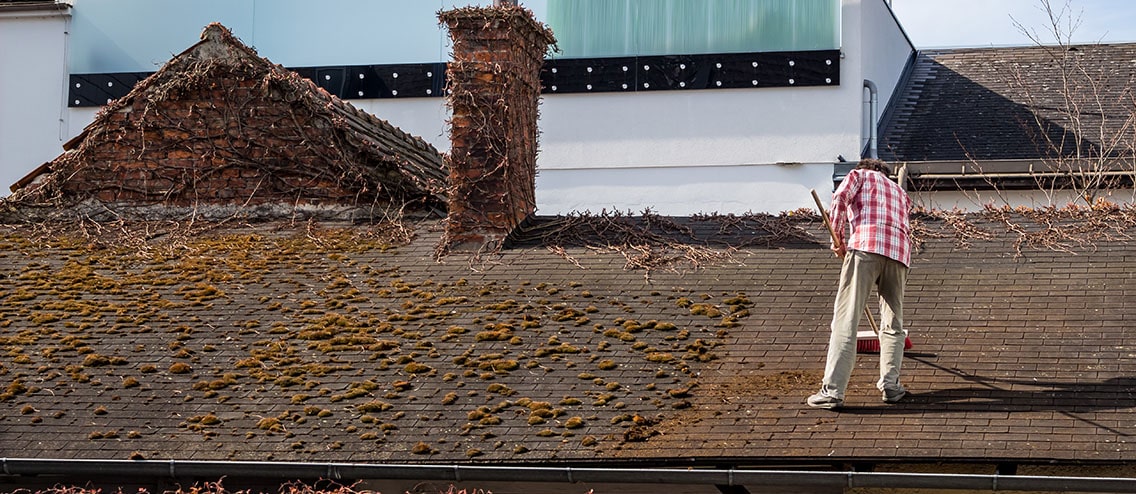
If you’re not sure if you need a pressure washer, consult with an expert. You need to get out the big guns in the form of a pressure washer before the growth gets so out of control that it causes thousands of dollars worth of damage!
Roof Pressure Washing Steps
Step One: Preparation
Some jobs can be completed in a single day. However, if you’re trying to get rid of black mold, you might need to soak it down with the chemicals one day and spray it off the next. This gives the cleaning solution a chance to do its magic, so the growth is easy to remove. The easier, the better should be your mantra, so you don’t do any damage.
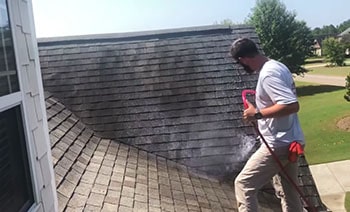
Attach a 35-degree nozzle to the wand. The 35-degree nozzle lets the pressure be distributed over a wide area instead of concentrating the force narrowly. That way, you don’t inadvertently blast the grit off the surface of the shingles, which could dramatically shorten your roof’s useful life.
Fill the tank with cleaning solution. Make sure you get the right one. It should be a high-quality, biodegradable, safe for pressure washers detergent designed for the specific type of roof infestation you’re suffering from.
What you’d use for green moss will be different from what’s needed for black mold. Wear non-slip shoes, so you don’t fall. Your shoes should be soft because hard shoes could damage your roof.
Step Two: Climb Up and Start Spraying
Put your ladder where you can get up onto the roof without damaging the edge. Climb up the ladder, pressure washer wand in hand. Position yourself at the roof’s highest point on the side that’s furthest from the ladder.
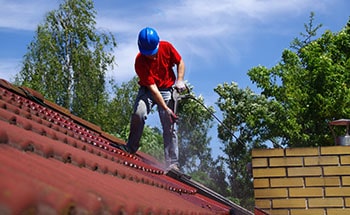
Face towards the gutters. Turn the machine on and hold the wand up high to let any residual pressure dissipate. Wash in the same direction as the shingles, so the water flows over them and down the roof.
Never shoot water towards the top of the roof because this will push water underneath the shingles and into your home’s interior spaces. It can also tear the shingles off. Move the wand closer to the roof if the force isn’t sufficient to remove the growth. If needed, slowly turn up the pressure.
Don’t use more than 1500 PSI. If you see grit coming loose or it’s collecting in the gutter, immediately dial back the force.
Step Three: Wash in Sections
Wash the roof in sections, moving from top to bottom in a steady side-to-side sweep. Make your sections the width you can comfortably reach by moving the wand back and forth. Apply detergent to one roof area and then spray it clean. Move on and do the same with the next section.
Make sure you’re always standing on a dry roof area because wet shingles are incredibly slippery. Constantly check for accidental damage. Slowly work your way back to the ladder so you can climb down when you’re done.
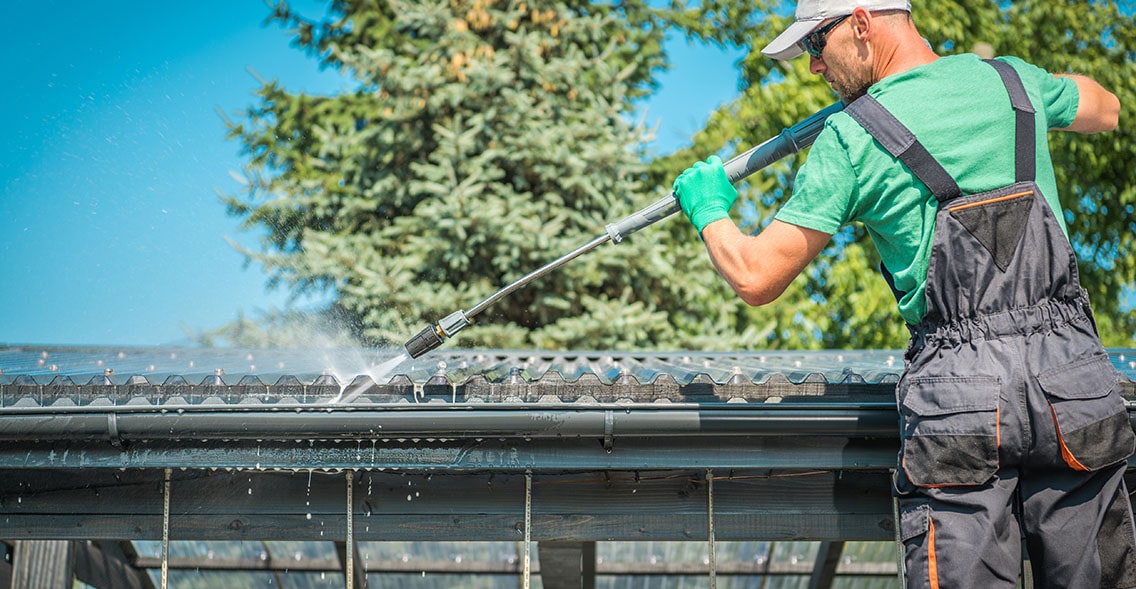
As you can see, pressure washing your roof isn’t something to be taken lightly. Not only can it cause horrendous damage if precautions aren’t followed to the letter, but it can be dangerous. However, there are going to be times that it’s virtually unavoidable.
If you need to pressure wash your roof and require expert advice on how to choose the best pressure washer, check out our guide!

Pressure Washer Tips & Tricks
